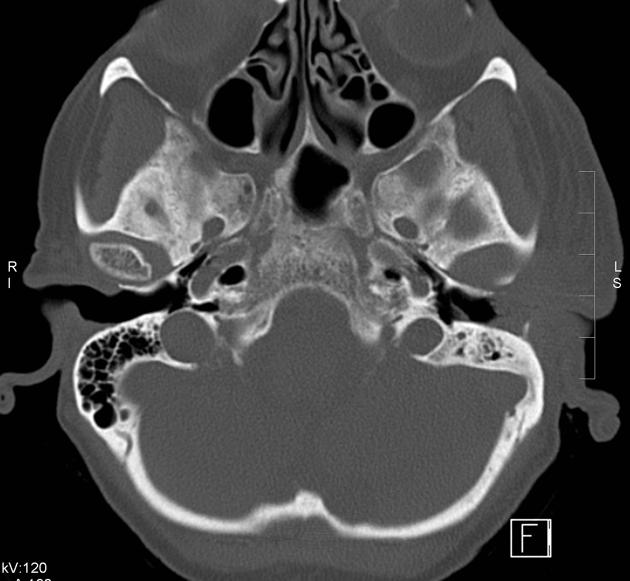Keratosis obturans is a rare external auditory canal (EAC) disease characterised by abnormal accumulation and consequently occlusion and expansion of the bony portion of the EAC by a plug of desquamated keratin. It can be confused for EAC cholesteatoma but they are completely different entities requiring different treatment.
On this page:
Epidemiology
Keratosis obturans is seen in younger patients usually less than 40 years old and is bilateral in 50% of cases.
Clinical presentation
Patients present with acute severe pain and conductive hearing loss.
Pathology
The cause is not clear in the majority of cases.
Keratosis obturans is characterised by:
dense plug of keratin debris within the deep meatus
hyperplasia of the underlying epithelium
chronic inflammation within the subepithelial tissue
remodelling and expansion of the canal
no evidence of erosion or necrosis of the underlying bone
Associations
chronic paranasal sinus disease
NB particularly in the paediatric group, where these concurrent findings approach 80%; but only in 20% of adult patients.
Radiographic features
CT
well-defined soft tissue mass within the bony EAC which may diffusely enlarge the canal with no bony erosion, as opposed to EAC cholesteatoma
tympanic canal is usually spared but may be slightly thickened
Treatment and prognosis
Usually treated by EAC toilet; due to a high incidence of recurrence, it may require several excisions of keratin plugs. It rarely needs surgical intervention.
Differential diagnosis
external auditory canal debris, which partially fills the EAC and usually shows air foci
external auditory canal cholesteatoma: EAC soft tissue density with bony erosion
external auditory canal carcinoma: irregular mass with or without bony erosion
otitis externa: surrounding inflammatory fat stranding
epidermal inclusion cyst of the external auditory canal






 Unable to process the form. Check for errors and try again.
Unable to process the form. Check for errors and try again.